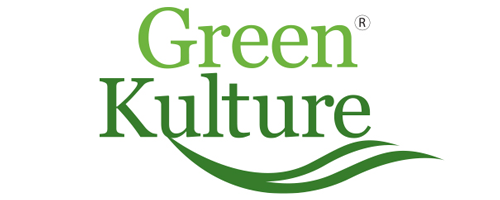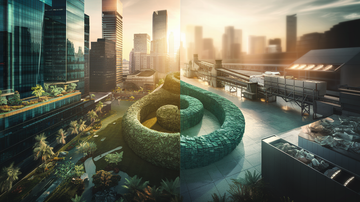Table of Contents
- Understanding Singapore's Waste Challenge
- Singapore's Recycling System Explained
- What Can (and Cannot) Be Recycled in Singapore
- Common Recycling Mistakes to Avoid
- The Role of Sustainable Packaging in Waste Reduction
- How Green Kulture's Packaging Supports Recycling Goals
- Practical Tips for Better Recycling at Home
- Beyond Recycling: The Future of Waste Management
Singapore faces a unique waste challenge. As a small island nation with limited land space, every piece of trash we generate puts pressure on our environment and infrastructure. While we've engineered impressive solutions like the offshore Semakau Landfill, the truth remains stark: at current disposal rates, our only landfill will be completely filled by 2035.
What many Singaporeans don't realize is that despite our high environmental awareness, our domestic recycling rate stands at just 13% – significantly lower than many developed nations. The good news? Small changes in our daily habits can make a tremendous difference.
At Green Kulture, we believe that sustainable living starts with informed choices. Our homegrown brand was created with a mission to promote healthier lifestyles through sustainable solutions, including how we package our natural, plant-derived products. In this comprehensive guide, we'll navigate Singapore's recycling system, clarify common confusion points, and show how environmentally-conscious packaging like ours fits into Singapore's broader sustainability goals.
Understanding Singapore's Waste Challenge
Singapore generated approximately 7.33 million tonnes of solid waste in 2022. While our waste-to-energy incineration plants efficiently reduce waste volume by 90%, the resulting ash and non-incinerable waste still require disposal at our sole landfill – Semakau.
Opened in 1999 through an engineering marvel that connected two islands with a 7km rock bund, Semakau Landfill was originally expected to last until 2045. However, our increasing waste generation has shortened its lifespan. This reality prompted the government to introduce the Zero Waste Masterplan, which aims to reduce waste sent to Semakau by 30% by 2030, extending its life beyond 2035.
For the average Singaporean, these statistics might seem distant and abstract. Yet, the disposable packaging, food waste, and unwanted items we discard daily contribute directly to this national challenge. Each household in Singapore generates approximately 1.5kg of solid waste daily – a number that must decrease if we hope to create a truly sustainable Singapore.
Singapore's Recycling System Explained
Singapore employs a commingled recycling system through the National Recycling Programme (NRP), which means all recyclables go into the same blue bins found in residential estates. This approach makes recycling more convenient for residents but requires proper sorting at recycling facilities.
Here's how the system works:
- Residents place clean recyclables in blue recycling bins located within their housing estates or condominiums.
- Public Waste Collectors collect these recyclables on scheduled days (check your town council's website for the collection schedule in your area).
- The materials are transported to Materials Recovery Facilities where they are sorted mechanically and manually into different waste streams.
- Sorted materials are then baled and sent to local recycling plants or exported for processing.
- Recycled materials are transformed into new products, reducing the need for virgin resources.
Beyond blue bins, Singapore also has e-waste recycling programs, Cash-for-Trash stations, and various retailer take-back initiatives. The recently implemented Beverage Container Return Scheme also encourages the return of empty beverage containers through a deposit-refund system.
What Can (and Cannot) Be Recycled in Singapore
One of the biggest barriers to effective recycling is confusion about what items are actually recyclable. Here's a clear breakdown:
Recyclable Items:
Paper Products: Newspapers, magazines, printouts, cardboard, paper packaging, paper bags, and envelopes (without plastic windows)
Plastic Items: Plastic bottles and containers (with recycling symbols 1-7), plastic cups without food residue, plastic packaging
Metal: Aluminum cans, steel cans, metal containers, aerosol cans (must be completely empty)
Glass: Glass bottles and jars (rinsed and emptied of contents)
Non-Recyclable Items:
Contaminated Food Packaging: Pizza boxes soiled with grease, food-stained containers
Single-Use Disposables: Styrofoam containers, plastic cutlery, disposable masks, straws
Tissue and Paper Towels: These cannot be recycled due to hygiene concerns and processing limitations
Composite Materials: Packaging made of multiple materials that cannot be easily separated (e.g., coffee cups with plastic lining)
Special Waste: E-waste, light bulbs, batteries (these require specialized recycling channels)
Remember: All recyclables should be clean, dry, and free from food residue before being placed in recycling bins. Contaminated recyclables can ruin an entire batch of otherwise recyclable materials.
Common Recycling Mistakes to Avoid
Even with the best intentions, many Singaporeans make recycling mistakes that can disrupt the entire process. Here are the most common errors and how to avoid them:
1. Contaminating recyclables with food waste - Food residue can contaminate an entire batch of recyclables. Always rinse containers before recycling them. If a paper product is heavily soiled with food (like a greasy pizza box), it belongs in the general waste.
2. "Wish-cycling" - This refers to tossing items into recycling bins hoping they can be recycled when they actually cannot. This creates additional work at sorting facilities and can contaminate legitimate recyclables. When in doubt, check the NEA guidelines or dispose of the item as general waste.
3. Placing recyclables in plastic bags - At sorting facilities, bagged recyclables are often treated as general waste because workers cannot efficiently check the contents of each bag. Place recyclables loose in the blue bins.
4. Not preparing items properly - Bottle caps should be removed, containers should be emptied and rinsed, and boxes should be flattened. These small steps greatly improve the efficiency of the recycling process.
5. Including non-recyclable paper products - Tissue paper, paper towels, and thermal receipt paper cannot be recycled. Many people mistakenly include these with paper recycling.
The Role of Sustainable Packaging in Waste Reduction
Packaging waste constitutes about one-third of household waste in Singapore. With the implementation of the Mandatory Packaging Reporting (MPR) framework, companies are now required to report packaging data and submit plans for packaging reduction.
Sustainable packaging plays a crucial role in Singapore's waste reduction strategy by:
Reducing material usage: Minimalist packaging designs use fewer resources while still protecting products.
Employing recyclable materials: Packaging made from easily recyclable materials supports Singapore's recycling infrastructure.
Using biodegradable alternatives: Certain packaging materials can break down naturally, reducing long-term environmental impact.
Enabling reuse systems: Durable packaging designed for multiple uses reduces the need for single-use containers.
The Extended Producer Responsibility (EPR) framework, starting with e-waste and potentially expanding to packaging waste, places greater responsibility on producers to manage the end-of-life impact of their products and packaging. This shift is encouraging companies across Singapore to rethink packaging designs and materials.
How Green Kulture's Packaging Supports Recycling Goals
At Green Kulture, we view packaging as an extension of our commitment to sustainability. Our approach to packaging aligns perfectly with Singapore's recycling infrastructure and waste reduction goals:
Recyclable Packaging Materials: We carefully select materials that can be processed through Singapore's existing recycling systems. Our bottles and containers are designed with recyclability in mind, using materials that can be easily sorted and processed at local facilities.
Minimal Packaging Design: We embrace the "less is more" philosophy, reducing unnecessary packaging elements while ensuring product protection. This approach minimizes waste generation from the start.
Chemical-Free Formulations: Beyond the packaging itself, our natural cleaners are made with plant-derived enzymatic solutions that break down naturally, reducing chemical pollution in water systems.
Concentrated Products: Many of our cleaning solutions are concentrated, requiring less packaging per use and reducing the overall packaging footprint compared to ready-to-use alternatives.
: We provide explicit guidance on how to properly recycle or dispose of our packaging, eliminating confusion and improving recycling rates.
By choosing Green Kulture products, you're not just getting effective natural cleaning solutions—you're participating in a circular approach to consumption that supports Singapore's broader environmental goals. Our bundle options further reduce packaging waste by consolidating multiple products in fewer shipments.
Practical Tips for Better Recycling at Home
Improving your recycling habits doesn't require a complete lifestyle overhaul. These practical steps can significantly enhance your recycling effectiveness:
Set up a dedicated recycling station - Designate a specific area in your home for collecting recyclables. Use separate containers for different materials if space allows, making sorting easier.
Establish a rinsing routine - Keep a small basin near your sink to rinse food containers before recycling. This simple habit prevents contamination and odors.
Flatten cardboard boxes and plastic bottles - This saves space in your recycling bin and in collection vehicles, improving efficiency throughout the system.
Learn your town council's collection schedule - Knowing when recyclables are collected in your area ensures your items don't sit too long in community bins, potentially creating overflow issues.
Educate your household - Make recycling a family affair by teaching children and helpers about proper sorting. Create simple visual guides to post near your recycling station.
Conduct a waste audit - For one week, track everything you throw away. This eye-opening exercise helps identify areas where you can reduce waste or improve recycling habits.
Use eco-friendly cleaning products - Products like those from Green Kulture's range not only come in recyclable packaging but also contain natural ingredients that don't leave harmful residues that might contaminate future recycled materials.
Beyond Recycling: The Future of Waste Management
While recycling is important, it's actually the third option in the waste hierarchy after "Reduce" and "Reuse." Singapore's Zero Waste Masterplan acknowledges this by emphasizing waste reduction and reuse alongside improved recycling systems.
The future of waste management in Singapore includes:
Circular economy initiatives - Rather than the traditional take-make-dispose model, Singapore is embracing circular approaches where materials remain in use much longer through repair, refurbishment, remanufacturing, and recycling.
Advanced sorting technologies - New optical sorting systems and AI-powered robots are improving the efficiency of materials recovery facilities, allowing more materials to be effectively recycled.
Producer responsibility - Extended Producer Responsibility (EPR) frameworks are expanding, making manufacturers more accountable for the entire lifecycle of their products, including disposal.
Consumer awareness campaigns - Ongoing education efforts aim to improve understanding of proper waste sorting and reduce contamination rates.
At Green Kulture, we're committed to being part of this future by continuously improving our product formulations and packaging to align with Singapore's sustainability journey. By choosing products that are designed with end-of-life considerations in mind, you contribute to a more sustainable Singapore for future generations.
Conclusion: Your Role in Singapore's Recycling Journey
Singapore's waste challenges require collective action from individuals, businesses, and policymakers. While our current domestic recycling rate of 13% indicates we have significant room for improvement, it also presents an opportunity for each of us to make meaningful change through simple daily choices.
By understanding what can be recycled, preparing items properly, and being mindful of the products we purchase, we all contribute to extending Semakau Landfill's lifespan and building a more sustainable Singapore. The choices we make about the products we bring into our homes—including their packaging—have lasting environmental impacts.
At Green Kulture, we're proud to offer natural, chemical-free products that not only help you maintain a healthier home but also support Singapore's environmental goals through thoughtful packaging design and sustainable formulations. Together, we can create a cleaner future for our island nation—one recycled bottle, one natural cleaner, and one informed choice at a time.
Ready to Make a Difference?
Discover Green Kulture's range of natural, eco-friendly cleaning products that help you maintain a healthy home while supporting Singapore's sustainability goals. Our plant-derived formulations and thoughtfully designed packaging make it easier to reduce your environmental footprint without compromising on effectiveness.





